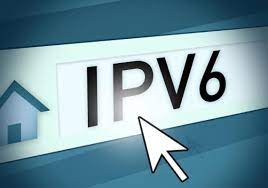IPv6 (Internet Protocol version 6) is the successor to IPv4 and is designed to address the limitations of IPv4, which is running out of available IP addresses. IPv6 introduces several key features, advantages, and limitations:
Features of IPv6:
- Expanded Address Space: IPv6 uses 128-bit addresses, providing a significantly larger address space compared to IPv4’s 32-bit addresses. This expansion allows for a virtually unlimited number of unique IP addresses, accommodating the growing number of devices and users connected to the internet.
- Simplified Addressing and Addressing Hierarchy: IPv6 employs a simplified address format, using hexadecimal notation and colons to separate address segments. It includes a hierarchical addressing structure that enables efficient routing and aggregation, reducing the size of routing tables.
- Stateless Address Autoconfiguration (SLAAC): IPv6 includes a built-in mechanism for automatically configuring IPv6 addresses on devices without the need for DHCP (Dynamic Host Configuration Protocol). With SLAAC, devices can generate their own unique addresses using the network prefix received from routers.
- Efficient Packet Processing: IPv6 includes streamlined packet headers that improve network efficiency and reduce processing overhead on network devices. IPv6 eliminates IP header checksums, simplifies header fields, and allows for more efficient packet handling, resulting in faster routing and forwarding.
- Extension Headers: IPv6 introduces extension headers, which enable the insertion of additional information into IP packets. Extension headers provide flexibility for implementing features such as fragmentation, security, mobility, and quality of service without modifying the base IPv6 header.
Advantages of IPv6:
- Address Space Scalability: The larger address space of IPv6 ensures the availability of unique IP addresses for all devices connected to the internet, including IoT devices, mobile devices, and future technologies. This scalability supports the continued growth and expansion of the internet.
- Enhanced Security: IPv6 incorporates IPsec (IP Security) as a mandatory feature, providing native support for secure communication and encryption. IPsec protects the integrity, confidentiality, and authenticity of IPv6 packets, addressing security concerns in a standardized manner.
- Improved Quality of Service (QoS): IPv6 includes flow labeling capabilities, enabling improved QoS support. Flow labels can be used to identify and prioritize specific types of traffic, ensuring optimal handling and bandwidth allocation for real-time applications like voice and video.
- Simplified Network Configuration and Management: IPv6’s stateless address autoconfiguration eliminates the need for manual IP address assignment, simplifying network configuration and reducing administrative overhead. Additionally, IPv6’s hierarchical addressing makes network management more efficient.
Limitations and Challenges of IPv6:
- Transition and Coexistence with IPv4: The widespread adoption of IPv6 requires a transition from IPv4 to IPv6, which poses challenges due to the coexistence of both protocols. Compatibility issues, legacy system support, and the need for dual-stack implementations are some of the challenges faced during the transition period.
- Limited Deployment and Compatibility: While IPv6 adoption is increasing, not all networks, devices, or internet service providers (ISPs) fully support IPv6. Legacy systems, outdated network equipment, and software applications may have limited or no IPv6 compatibility, requiring additional effort for integration.
- Training and Knowledge Gap: IPv6 introduces new concepts, protocols, and addressing schemes that may require additional training and knowledge for network administrators, engineers, and IT professionals. Bridging the knowledge gap and ensuring expertise in IPv6 implementation can be a challenge.
- Network Security Considerations: While IPv6 includes built-in security features, the introduction of new protocols and technologies can pose security challenges. Network administrators and security professionals must be aware of potential vulnerabilities and ensure proper configuration and monitoring to maintain a secure IPv6 environment.
Despite these challenges, IPv6 continues to gain momentum as the future of internet addressing. Its features and advantages address the limitations of IPv4 and provide a foundation for scalable, secure, and efficient communication in the evolving digital landscape.
SHARE
